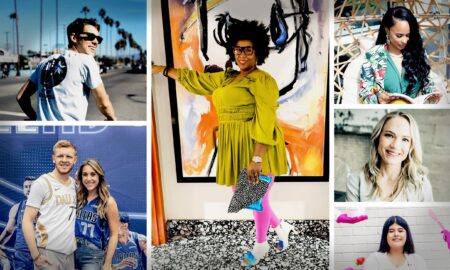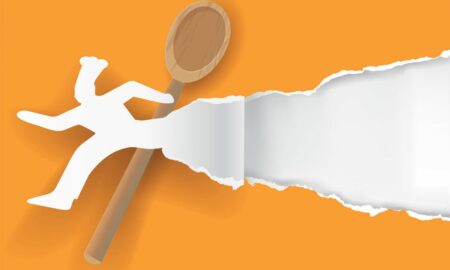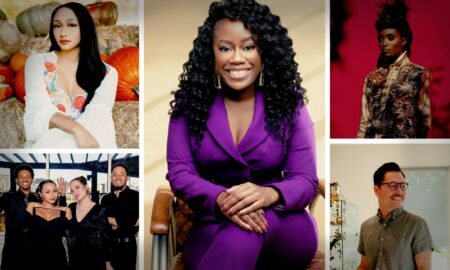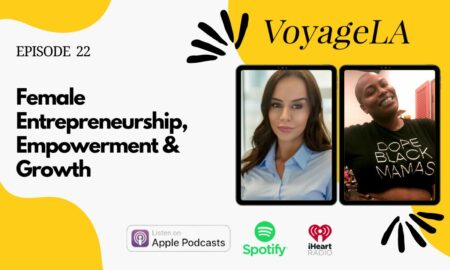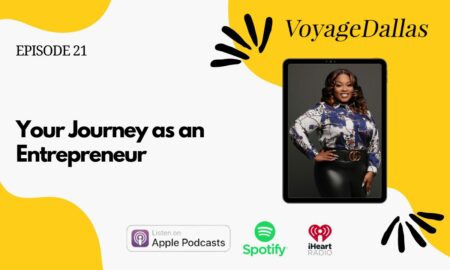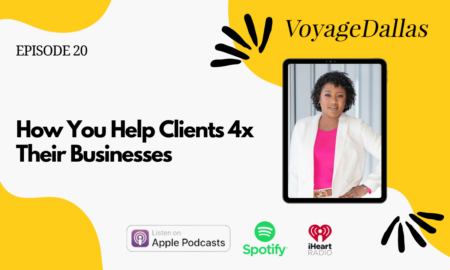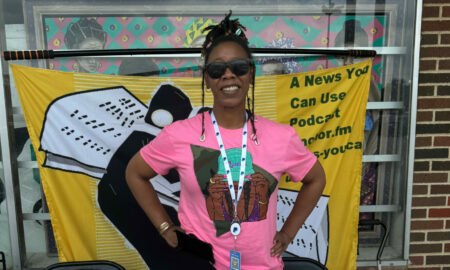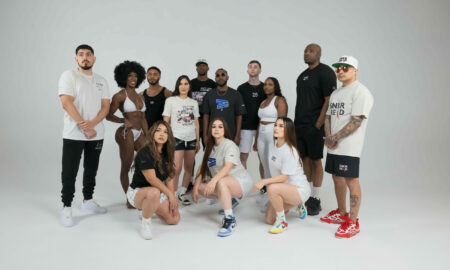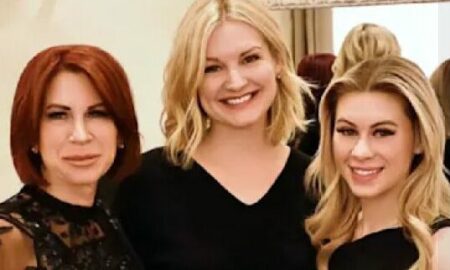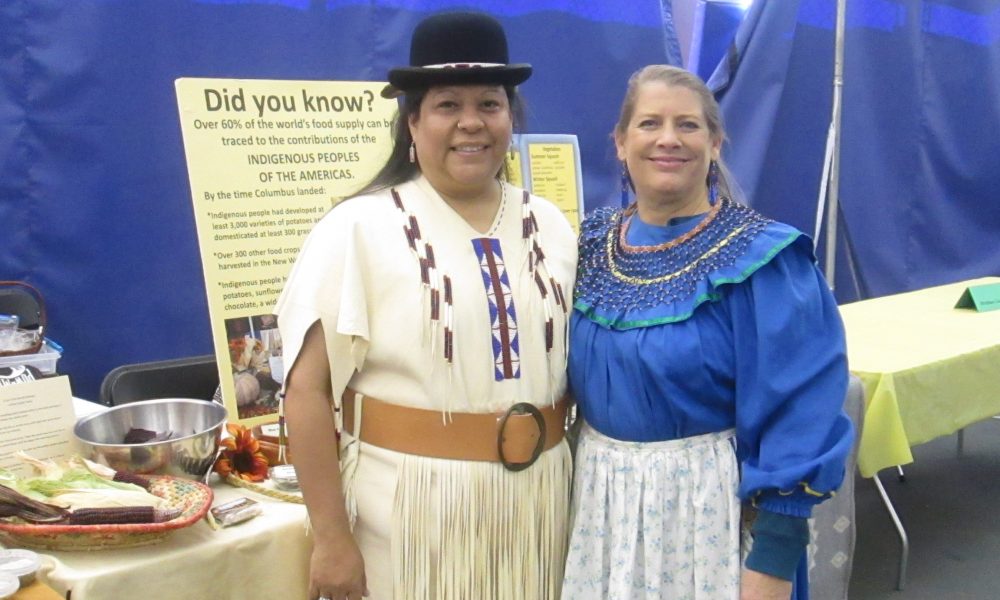

Today we’d like to introduce you to Annette Anderson.
Thanks for sharing your story with us Annette. So, let’s start at the beginning and we can move on from there.
I was born and raised in Oklahoma where my Native American Indian background was respected and was a focus in the educational system during the 1960’s and 70’s. The heart of the American Indian movement was during my teen years, incredible American Indian authors such as Vine Deloria Jr. made a huge impression on me. I went to Oklahoma State University for my Undergrad in Sociology and then went to University of Oklahoma and University of Houston to get my Masters of Social Work.
When I married and moved to Houston, Texas I immediately realized it was hard to find other Native people in the big city. I also realized that Texans seemed to act as if we were extinct and were a part of history that had nothing to do with Texas.
I was a Social Worker trained regarding the Indian Child Welfare Act which is a federal law related to adoption and child welfare of American Indian children. In Houston, I worked with children who had been in foster care or were adoptees who were Native and knew nothing about their culture. They relied on the Hollywood version of Indians as their role model for how “Indians should act.”. Some children were eligible for placement in adoption and the people getting ready to make decisions for these children weren’t aware of the law and didn’t know how to implement compliance with the law. It was a big eye opener that Texans did not understand the relationship of tribal nations to the federal government.
When my husband and I moved to east Plano and my daughters were born, I felt a need to educate, get them involved and immersed in Native culture. They needed a family of Native people… traditionally we have many Aunts, Uncles, Mothers and Fathers who help us learn about the ways of our various tribes and the commonalities of our cultures.
With over 500 Nations, our beliefs, lifeways and the activities that support them are quite diverse but in an Urban setting we find support through athletics such as stickball, basketball, bowling, church socials and community events such as pow wows. In 2008, a couple of members of our organization had the opportunity to become cultural consultants to an event Santa Fe Day on the Square in Historic Downtown Carrollton. In the early years, it was a Native American arts event but as parents, we saw the opportunity to help it grow into a cultural education event for children and families. As the current Chairperson for the event, my vision for what is now called Santa Fe Days in the Park, is an event attended by every Native family and their children in the Metroplex. I want an event that makes Native children feel proud of their heritage and they will feel happy bringing their non-Native friends to have a wonderful time which demystifies and humanizes our culture. I want an event that every year provides a chance to learn something new about our culture and how our contributions help us today thrive in this country.
Our organization has grown the Santa Fe Days event to almost 8500 in attendance, but what we have also grown, is our year-round work at festivals, schools, corporations and other groups to bring knowledge of Native culture in fun, interactive way. Each year we attend over 30 events which reach another 40,000 people a year.
Has it been a smooth road?
From the perspective of Native culture, we embrace a smooth road just as much as climbing a mountain. Our organization has faced many terrains and each have led us on a path that was needed and valuable. Sometimes you have to climb a mountain to see the bigger picture.
For example, when we learned about the Dallas I-35 corridor project which would impact our venue near Beltline road and I-35 and simultaneously the renovation of Historic Downtown Carrollton, we knew we would have to find a new venue for Santa Fe Days or end the event.
One of our committee members, James Box, approach the Sandy Lake Amusement Park owners Frank and Vickie Rush (about one mile north of downtown Carrollton) to see if they would let us lease their park. As a nonprofit we rarely have extra money in the bank so we really had no idea how we would raise funds for such a huge endeavor. Our blessing came when the Rush family welcomed us with open arms. What we learned is the Mr. Frank Rush III, is a third-generation friend to the American Indian. His grandfather, Franklin S. Rush was instrumental in saving one of our most sacred animals, the American Bison. Mr. Rush’s grandfather was appointed by President Theodore Roosevelt to supervise a 59,00 acre piece of land now known as the Wichita Mountains Wildlife Refuge near Lawton, OK. His grandfather was a naturalist, one of the first people to study the land and be concerned about the animals that were becoming endangered. In 1907 Grandpa Rush brought the last living buffalos from the Bronx Zoo by train and reintroduced them to their native land. People familiar with this story do not realize that Mr. Rush’s grandmother also took part in the preservation efforts by nurturing back the wild turkey.
In 1923, his grandfather retired and opened the Craterville amusement Park in Cache, Oklahoma. Mr. Rush was a friend to the Southwest Indian tribes located in that area. Grandpa Rush entered into a covenant with the leaders of those Nations so that the park could be the location for the American Indian Fair. His Grandfather and later his Father worked together to continue the American Indian Exposition until the Ft. Sill military base took over the land where the park was located. Mr. Rushes father moved to Texas where they opened Sandy Lake Amusement Park in 1971 and began Wild West Shows with their friends in the local Native community.
So like all things in the Native circle of life, the history of the Rush family led to our Santa Fe Days IN THE PARK location at Sandy Lake Amusement Park in 2015. The current Mr. Rush felt that his Grandfather and Father would want him to help our event so that the Legacy lives on. Frank and Vickie Rush have been incredible advocates for our people, organization and our annual event at their park. We cherished the merchants and friends at our former home in historic downtown Carrollton from 2004 to 2013 but the rough road led us to our new home at Sandy Lake Amusement Park, opening day in March.
So, as you know, we’re impressed with Indigenous Institute of the Americas – tell our readers more, for example what you’re most proud of as a company and what sets you apart from others.
The Indigenous Institute of the Americas was the inspiration of 2 Apache men and a Huastic woman, Gregory Gomez, Eddie Sandoval and Cathy Gutierrez-Gomez in the 1980’s.Gregory Gomez continues as our President and Dr. Cathy Gutierrez-Gomez, a professor at the University of New Mexico continues on our Advisory Council. Mr. Sandoval, a retired professor from the Tarrant County Community College system, continues his community work to educate about issues facing Native people.
Our organization is an all-volunteer, nonprofit which seeks to preserve the culture of the Indigenous people of all the Americas. Our knowledge, our lifeways, our spirituality and our crafts are all unique to our Tribes and Nations. Our purpose is to promote and share our similarities and differences comprising the traditional cultures prior to and after 1492. Our mission is to cultivate awareness with the hope that our vision becomes a reality: a world that understands values, respects and celebrates Indigenous culture and perspective of the Americas. Our organization started in the Dallas/Ft. Worth area, moved to Albuquerque and in 2014 when we officially took over full sponsorship of our annual event, we moved our nonprofit back in Texas.
For many of us our focus is on children. How can we help Native children in urban areas feel validated and important? How can we help all children learn about our culture, alleviate misinformation and stereotypes so that their Native classmates will feel understood and valued? These questions are a key belief in our culture, all children are precious and nurturing them supports the preservation of our culture.
We are very proud of our initiatives to engage children and their families in learning about Indigenous culture. We believe that education should come through traditional means if possible. Historically storytelling, oral traditions, listening, observing, touching, doing and exploring were pathways for learning.
Our seed ambassador program is the most popular and well-known activity in the community. We take our seed bags to every event, (over 30 events and programs a year). The children at Pow Wow’s don’t know my name they only know me as the “seed lady”. With the help of community volunteers, we have made and distributed over 6,000 seed bags since 2013. The cotton fabric and ribbon/yarn are donated from the community as they clean out their closets.
Each year our theme reflects our seeds or our seed bags. We have had a great deal of fun cutting and hand sewing these bags that hang from the necks of our children, much like our medicine bags. We put seeds in the bag and always have a learning tag which provides an accurate piece of information about our culture that the parents can read to their child after our event. We ask the children to be the keepers of our seeds, SEED PROTECTORS. Children, for some reason, have the wisdom to love our plant babies (seeds) more than adults. Young people feel proud to be the people we will turn to if we ever lose our heirloom seeds in the future.
I saw a quote that said 60% of the world’s food supply is reliant on foods developed by Indigenous people in the Americas. I asked myself, do children realize how many foods in the grocery store are the result of Native people’s agricultural knowledge? Probably not. We developed a display called the Indigenous Grocery Store with items a child might find at the grocery store. At our annual event, Santa Fe Days in the Park we now have the Neh Sha market where we sell Native American food products and items related to health through plants that were used prior to European contact.
In January, we will have our Seed Ambassador training program for children and adults who would like to learn about our food ways and medicine ways so they can teach other and hopefully become volunteers.
To support oral and hands-on traditions of learning, we have developed mobile educational displays (MED) on many topics, the materials are recycled, reused or repaired (our motto). All our displays are available for loan to home schools, schools, libraries, corporations, churches and community organizations. Our goal is to provide accurate education, dispel stereotypes and develop appropriate materials for children and families.
My favorite activity is our “Ask Uncle Gregory” video series. We take questions that have been asked of us about Native people and then our president, historian and elder, Gregory Gomez, answers based on his years of knowledge as a world traveler, language and history buff and Native historian. “Do Indian people smoke peyote in the peace pipes?” “What is a Pow Wow?”, “What is a Native American Ceremony?” or “Is it OK to collect money for doing a Native American ceremony?” and many more. We realize that in today’s world is may be hard for people outside our culture to ask questions for fear of accidently insulting someone or appearing ignorant. We welcome those questions and are trying to address them via YouTube and Vimeo.
So as you can see, we have a unique take on education and enlightenment with a focus on children, the seeds of our future.
Let’s touch on your thoughts about our city – what do you like the most and least?
I grew up in Oklahoma, the same house with close neighbors who were like second parents and their children were like siblings. Where my family lives in far East Plano with the trees, green area, friendliness and diversity of people, our lives are very much in a similar pursuit. We have lived in the same house for over 30 years, we have neighbors who have helped our children and we theirs. I also love the beautiful and unique Native American Indian community in the broader metroplex. Some say that we are invisible.
Many don’t realize we are there. Many of the families in the Dallas Ft. Worth area are descendants of those who were brought to Dallas on the relocation program in the 1960’s. Choctaws, Navajo, Cherokees and many, many more tribes were told that by moving away from Indian country and moving to the Urban areas the BIA would help them with jobs, housing and education. The best of life was waiting for them. These families have survived a long history of relocation, survival, loss, trauma and cultural deterioration, much as their ancestors faced during the removal programs in the 1800’s.
The beautiful people of the Dallas Ft. Worth Native community thrive through church functions, Pow Wow’s, Tribal events and community organizations such as the Indigenous Institute of the Americas.
What saddens me is the lack of accurate and valuable curriculum in the school districts across Texas. There are always wonderful teachers who try very hard to present our history in an accurate way, but it is a rare teacher who is knowledgeable about our culture from within our culture. My youngest daughter felt validated for the first time in her life in college at the University of New Mexico, when she took a history class from a Native professor and heard what I had been teaching her throughout her life.
The children and families we encounter at public events are usually very respectful and curious about Native people but judging by the questions that are asked, our community does not understand the unique relationship of Native people to the Federal Government through the Constitution. We are not a minority group, we are actually a political group. We are not a people based on the color of our skin or the color of our eyes but on our legal relationship with the tribes or nations of our ancestors. Our involvement in the Native community is also critical to our visibility.
I love Dallas, I love the support that happens in the Native community, I love the broader community who is trying to learn and respect the differences and similarities of our cultures. It is my hope that all cultures in the Metroplex continue to reach out to one another so no one feels marginalized.
Pricing:
- Santa Fe Days in the Park event costs $2.00 per person entry fee to Sandy Lake Amusement Park. Parking is free.
- Native American Indian artist stand food booth fees range fro $175 to $225
- Our Neh Sha market items ranges from $1 to $30 dollars depending on the item.
- Mobile educational displays are free but we would appreciate a $25 donation to help us keep the displays fresh and replenished.
Contact Info:
- Address: Office address
1700 Alma Drive, Ste 315,
Plano, TX 75075Santa Fe Days in the Park
Sandy Lake Amusement Park
1800 Sandy Lake Road,
Carrollton, TX 75006 - Website: www.iiamericas.org www.santafedays.com
- Phone: 972-480-5310
- Email: santafedays@gmail.com iiamericas.org@gmail.com
- Instagram: https://www.instagram.com/santafedays/
- Facebook: Friend Page: https://www.facebook.com/santafedays
Event Page: https://www.facebook.com/IIAsantafedays
Organization Page: https://www.facebook.com/IIAmericas.org/ - Twitter: https://twitter.com/santa_fe_days
- Other: Vimeo: https://vimeo.com/santafedays
Pinterest: https://www.pinterest.com/santafedays
YouTube: https://www.youtube.com/user/Santafedays
YouTube: https://www.youtube.com/user/iiamericas





Image Credit:
Sherry Boyer
Getting in touch: VoyageDallas is built on recommendations from the community; it’s how we uncover hidden gems, so if you know someone who deserves recognition please let us know here.

